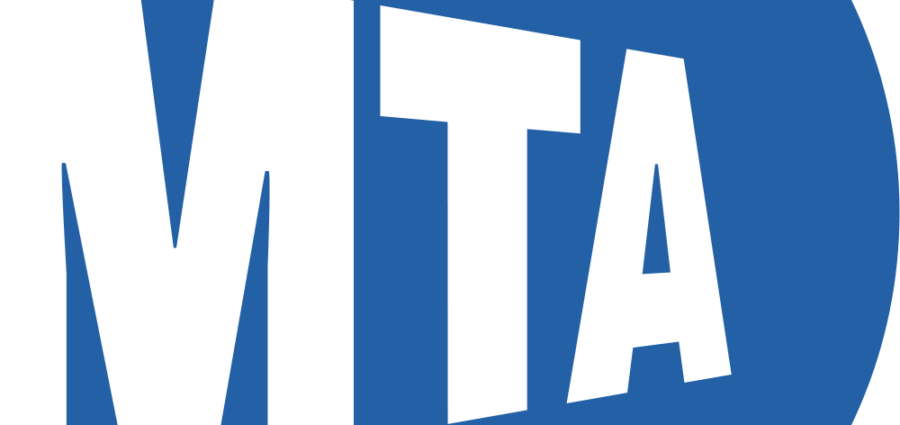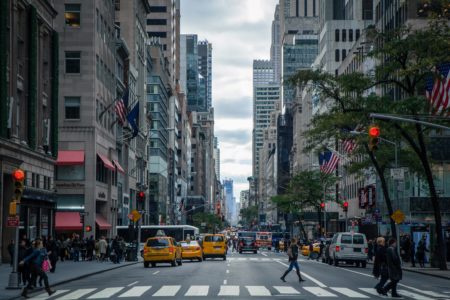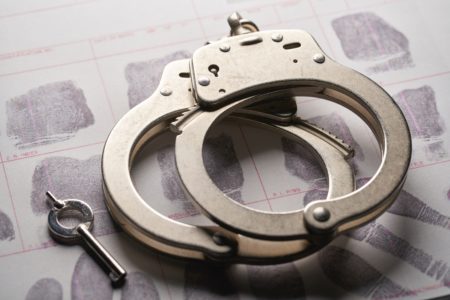The Metropolitan Transportation Authority (MTA) today issued an update as New York City enters Phase 3 reopening. Average weekday ridership on subways and buses has reached a combined total of more than 2.1 million – 1.1 million on subways and more than 1 million on buses. While a significant increase since the start of the pandemic, the figure represents a decline of 74% from normal weekday ridership levels of 7.6 million combined riders – 5.5 million on subways and 2.1 million on buses. LIRR ridership is down 80% from normal levels and Metro-North is down 85%.
The MTA has prepared its system for further ridership gains through increased service, around-the-clock disinfecting, and a mandatory requirement all customers and employees wear masks. With mask compliance at 95%, the MTA continues to distribute 2 million masks that were provided by the State and the City. The MTA has also deployed a dozen vending machines at 10 subway stations allowing customers to buy CoViD-19 personal protective equipment (PPE). The new machines, part of a pilot program, offer reusable face masks, gloves, hand sanitizer, and sanitizing wipes. More information is available here.
“New Yorkers returning to work during Phase 3 will be stepping into a whole new system—one that is the cleanest it has ever been to minimize risk for our customers and employees,” said Patrick J. Foye, Chairman and CEO of the MTA. “Our unprecedented disinfecting regimen, PPE distribution and safety precautions taken since the start of this pandemic should give riders — all of whom should wear masks — a sense of security. The MTA has been at the forefront of customer and employee safety and will continue to do so as New York City nears its full return.”
“As ridership continues its climb back up to pre-pandemic numbers, we want to ensure our customers that New York City Transit has everything you need to get around the city safely,” said Sarah Feinberg, Interim President of New York City Transit.
“The system is the cleanest it has ever been, we have masks for those in need, a dashboard to show ridership numbers and continue to look at innovative ways to keep riders informed.
“Our workforce continues its heroic work to ensure the system safe and better than it was before the pandemic as New York City and Long Island begin their recovery,” said Phil Eng, President of Long Island Rail Road. “Riders coming back will feel a sense of safety and empowerment over their commute like never before, with the capacity tracker feature on our TrainTime app and mask distribution available at any station. The LIRR carried Long Island’s essential employees through the pandemic and will carry us all out of it as the regional economy continues its phased reopening.”
“We welcome back our returning customers,” said Catherine Rinaldi, President of Metro-North Railroad. “Customers who haven’t ridden for a while will notice that we are now requiring customers to wear masks and we take that seriously. Markings on station platforms and at ticket booth lines to encourage social distancing and have added more service in anticipation of more riders coming back. I cannot thank the Metro-North workforce enough for all they have done and will continue to do.”
Ridership and Service Details
New York City Transit
Since May 01, 2020, ridership on the New York City Subway has gradually increased, surpassing 1 million on June 24, 2020. It is now averaging more than 1.1 million on an average weekday, a decline of approximately 80% from normal levels. Subways returned regular weekday service on June 8 except for the continuing closure of the system between 01:00 a.m. and 05:00 a.m. for disinfecting and cleaning.
With bus service frequencies increasing to 100% in Manhattan, buses service levels are now at 100% of normal citywide. The MTA has created a new bus route, the B99, offering overnight-only express service between Midwood and Manhattan, following a route similar to the  subway line. It operates every 20 minutes between 01:00 a.m. and 06:00 a.m. Bus ridership surpassed 1 million for the first time on Friday, June 19, 2020 and is now averaging more than 1 million, a decline of approximately 50% from the MTA’s normal average weekday bus ridership, which ranges between 2.1 and 2.5 million.
subway line. It operates every 20 minutes between 01:00 a.m. and 06:00 a.m. Bus ridership surpassed 1 million for the first time on Friday, June 19, 2020 and is now averaging more than 1 million, a decline of approximately 50% from the MTA’s normal average weekday bus ridership, which ranges between 2.1 and 2.5 million.
Additional Staten Island Railway service resumes on July 06, 2020, including express trains for the first time since the essential service plan was implemented. Morning rush hour service is every 15 minutes instead of every 20 minutes. Staten Island Railway trains are scheduled to coordinate with Staten Island Ferry departures and arrivals.
Long Island Rail Road
The LIRR introduced new timetables on June 8 that increase service to 90% of normal weekday service. Service details can be found on the MYmta and LIRR TrainTime apps, and via MTA.info. Off-peak fares continue to remain in effect at all times.
The Long Island Rail Road continues to distribute masks and hand sanitizer at stations.
To help foster social distancing as the LIRR welcomes customers back, it has made car-by-car seating availability information available in real-time on the recently updated LIRR TrainTime app.
Off peak fares are in effect at all times.
Metro-North Railroad
New schedules are in effect today for the Pascack Valley Line and Port Jervis Line. On these lines, peak fares are being collected on peak trains. East of Hudson, Metro-North continues to provide 63% of normal service levels with the schedules that went into effect on June 22, 2020.
Metro-North station ambassadors will continue to be at major stations. Metro-North has installed hand sanitizer dispensers at stations. Masks are stored on all trains in the event that a person boards without wearing one.
A video offering guidance on how to ride Metro-North during this stage could be seen below.
As always, Metro-North is closely monitoring ridership on a train-by-train basis to be ready to make additional adjustments.
East of Hudson, off peak fares are in effect at all times.
Unprecedented Cleaning & Disinfecting
On May 06, 2020, the subway system began to shut down from 01:00 a.m. to 05:00 a.m. for the first time in its 115-year history for the most aggressive cleaning and disinfecting regimen in its history. To date, all 472 subway stations have been cleaned over 107,000 times and the rolling fleet of subway cars have been cleaned over 1.3 million times. Access-A-Ride vehicles have been cleaned more than 147,000 times. Buses have gone through more than 302,000 cleaning cycles.
Long Island Rail Road stations have been cleaned more than 29,000 times to date and LIRR train cars have been cleaned more than 89,300 times during that time. Daily disinfecting and cleaning will continue with all LIRR train cars being sanitized at least once a day and stations at least twice daily.
Daily disinfecting and cleaning will continue with all Metro-North train cars being sanitized at least once a day and stations at least twice daily. To date, Metro-North stations have been cleaned more than 29,000 times, while train cars has been cleaned more than 48,500 times.
Innovative Bus Barriers
The MTA is installing an innovative barrier across 4,800 local buses and 1,000 express buses to further enhance bus operator safety. Work to install a full-length vinyl sliding curtain on the 1,000 express buses began last week and will enable the bus operator to be isolated when passengers board. Express bus customers will continue to board through the front door, but will not be permitted to sit in the first row of the bus to ensure a safe distance is kept from the bus operator.
Additionally, on certain local buses, a full-length polycarbonate slider is being installed by the operator’s compartment. The MTA is installing a second prototype on other local buses – a full-length vinyl curtain – which the bus operator can slide back and forth when passengers board. Rear door boarding was implemented March 23 on local buses to protect all frontline employees from the spread of CoViD-19. As the innovative barriers are deployed, the MTA is expected to resume front-door boarding in August.
MTA Continues Call for $3.9 Billion in Emergency Funding
The MTA is facing staggering financial losses as a result of the CoViD-19 pandemic’s impact on revenue from ridership and dedicated taxes. The MTA expects this month to exhaust the approximately $3.9 billion it had received in March from Congress’ CARES Act. The MTA is urgently calling on the U.S. Senate to take action and deliver an additional $3.9 billion in funding for the MTA’s operating needs for the remainder of 2020. Absent the billions in federal funding necessary for ensuring the system can function at pre-CoViD levels, all options remain on the table.
Data Dashboard
The MTA, a global leader among transportation agencies and the largest in North America, has acted expeditiously since the beginning of the CoViD-19 pandemic’s arrival in New York. To date, the agency has distributed 4.1 million masks, 6.3 million pairs of gloves, 41,000 gallons of hand sanitizer and 129,000 gallons of cleaning solutions to its heroic frontline employees and implemented an unprecedented cleaning and disinfecting regimen across subways, buses, commuter railroads and stations.








